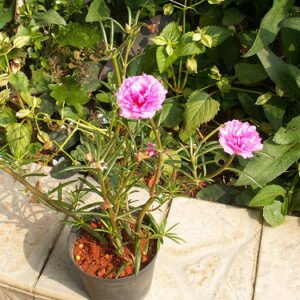Description
Description for Wind tree
Best grown in rich, humusy, consistently moist, fertile, well-drained soils in full sun. Generally intolerant of urban pollutants. Italica is a male clone which must be propagated by cuttings.
Planting and care
Autumn is the best time to plant a Japanese Maple. Ideally, you should plant at least a month before the ground freezes, so it has time for some root growth before winter. But if you find yourself planting late, don t worry. Your tree will wait patiently until spring to begin settling into its new home!
Unless your weather turns exceptionally dry, reduce the amount of water you give the tree in autumn. This will stimulate better color changes.And as autumn comes to a close, be sure your Japanese Maple has a nice thick layer of mulch, and pluck off any dead leaves still clinging to its branches.
Caring for Wind tree
-
- Winter is a carefree season for Japanese Maple grown within their hardiness range and mulched in late fall.
- The only concern is heavy snow loads, which might cause some branches to snap.
- After a particularly heavy snowfall, brush away any large accumulation of snow, being careful not to treat the branches too roughly.
- Ice, on the other hand, should be left in place.
It freezes onto the branches and is best left alone.
- Spring is the most vulnerable time for your Japanese Maple. As discussed above, the tree will leaf out early — often spectacularly! — and then suffer in late frosts. Keep it covered whenever frost threatens. As soon as the weather settles down, begin a regular watering and feeding schedule.
Typical uses of Wind tree
Special features: Not considered to be a good landscape tree. Best used for windbreaks or screens or along roads. Suitable as a specimen.
Ornamental use: The plant is used for ornamental purpose.
Medicinal use: Unverified information The turpentine obtained from the resin of all pine trees is antiseptic, diuretic, rubefacient and vermifuge. It is a valuable remedy used internally in the treatment of kidney and bladder complaints and is used both internally and as a rub and steam bath in the treatment of rheumatic affections.
It is also very beneficial to the respiratory system and so is useful in treating diseases of the mucous membranes and respiratory complaints such as coughs, colds, influenza and TB. Externally it is a very beneficial treatment for a variety of skin complaints, wounds, sores, burns, boils etc and is used in the form of liniment plasters, poultices, herbal steam baths and inhalers. The wood is diaphoretic and stimulant. It is useful in treating burning of the body, cough, fainting and ulcers
Delivery: With in one day
Any questions, feel free contact us:







Reviews
There are no reviews yet.